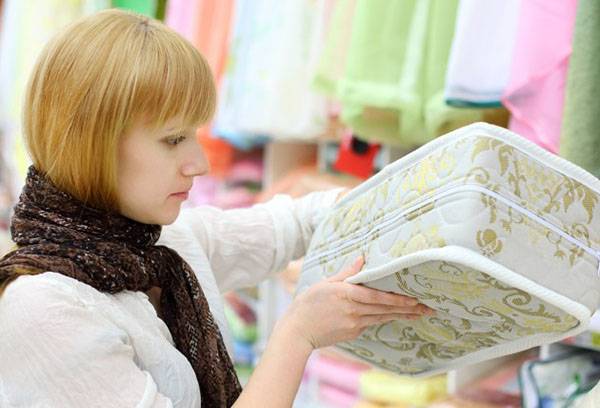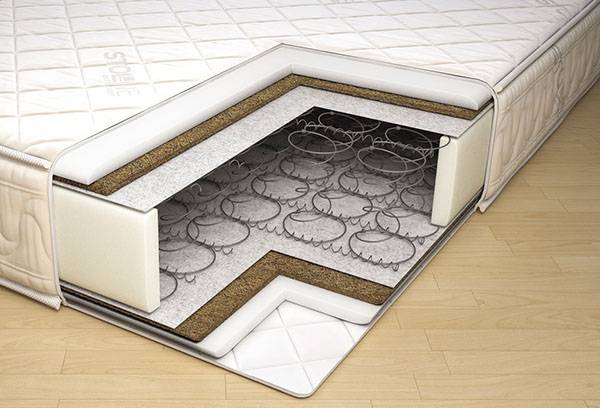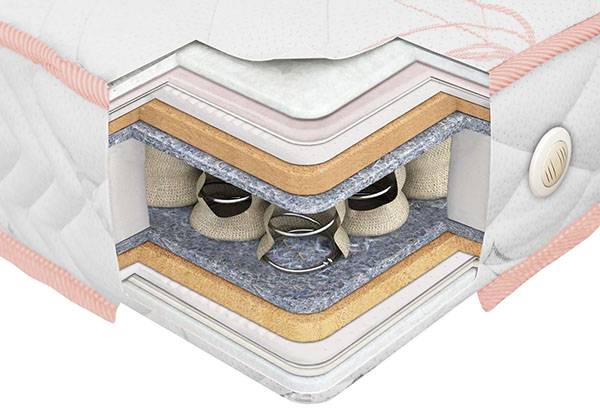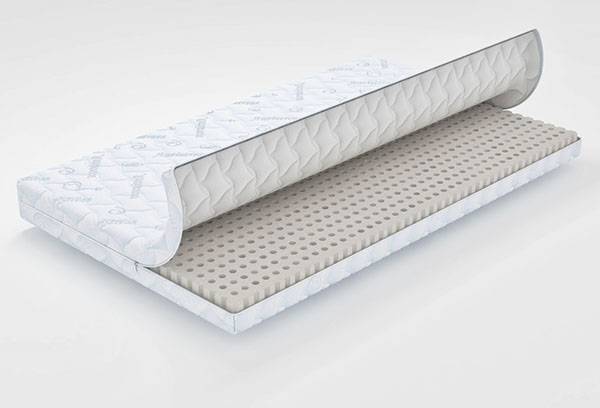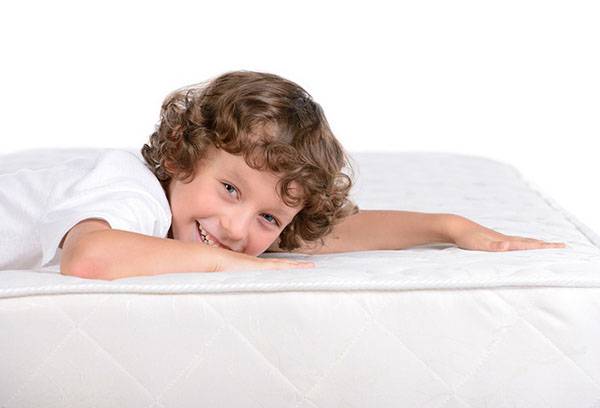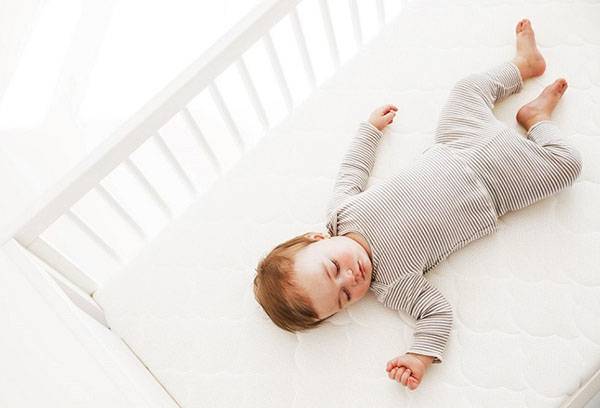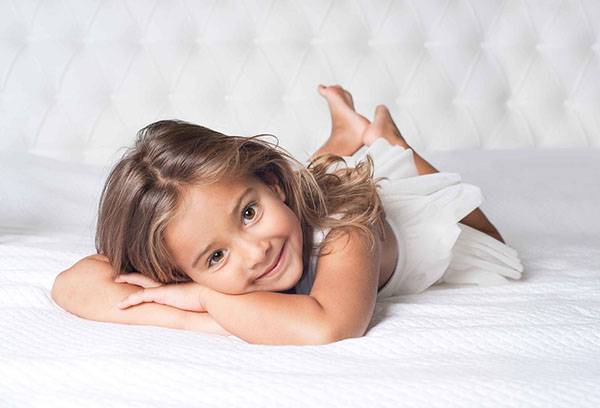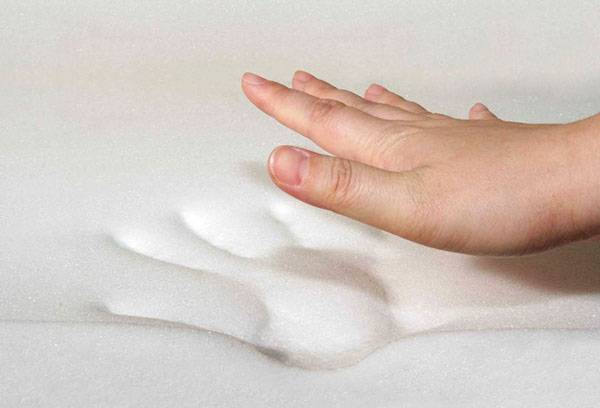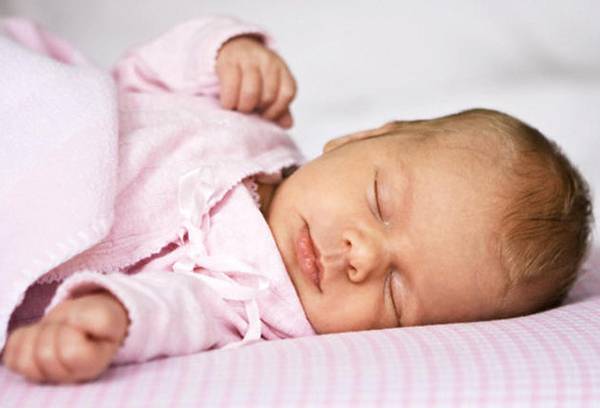How to choose a comfortable and high-quality children's mattress
Content:
- Spring mattresses
- With dependent springs
- With independent springs
- Mattresses without springs
- Natural latex
- Polyurethane foam
- Coconut Coir
- Seaweed
- Hollofiber
- How to choose the right mattress
- Mattresses for a child from 0 to 3 years
- Mattresses for a child from 3 to 5 years
- Mattresses for children 5-12 years old
- How to distinguish a quality mattress
For each person, especially a child, a calm, full sleep is very important, which can only provide a comfortable sleeping place. Today, many models of mattresses for children have been developed. Products are made from a variety of materials and fillers. Each manufacturer claims that it is his products that are the most convenient and useful. Many parents are interested in how to choose a children's mattress so that it supports the spine correctly, does not obstruct movement, and passes air well. In addition, when choosing accessories for sleeping, it is necessary to take into account the age of your beloved baby, since the skeleton of a child is constantly developing and for a certain age this or that mattress is needed.
All products are divided into two categories: spring and without springs. Which model to purchase for your child should be decided by each parent independently, having studied the features of the design and materials.
Spring mattresses
Mattresses with metal springs have been known for a long time. They are often bought for a children's bedroom, as these products are inexpensive and last quite a long time. There are models with a dependent spring unit (bonnell) and an independent one, which is labeled TFK or Pocket Springs.
With dependent springs
The dependent spring unit is designed in such a way that when pressed against a single spring, several neighboring ones also bend. As a result, when a child lays on a mattress with a similar design, his body as if falls into a hammock. The greater the weight, the stronger the springs are compressed. Sagging is minimal for products equipped with small parts that fit tightly together.
Such a design is not able to provide the orthopedic effect necessary for the child and is therefore not recommended for newborns or for older children. In addition, the spring model in the children's bedroom will last much less compared to a mattress without springs. After all, everyone knows that little tomboys are very fond of jumping in the crib.
Tip
Of the products in this category, it is better to choose a children's mattress, in which the springs are fixed by a metal frame around the perimeter.
With independent springs
In mattresses with an independent unit, each spring is placed in a separate cover, with the help of which a soft connection of the parts into one unit occurs. After pressing on one element in such a product, all other springs will remain in the initial position, as a result of which the necessary orthopedic effect and complete noiselessness are achieved when the child moves in bed.
Tip
When choosing a mattress, you need to pay attention to the material of the cells in which the springs are placed. When the metal is rubbed on synthetic material, the product will accumulate an electric charge.
Mattresses without springs
Models without springs make worthy competition to spring mattresses in the market of children's products. The metal structure in such products is replaced by one or more fillers.
In addition to the fact that mattresses without springs provide comfortable rigidity and the necessary anatomical support for the child during sleep, they are durable, do not accumulate static electricity, and do not create a magnetic field.What fillers are suitable for children's mattresses, what are their advantages and disadvantages, the author of purityis.decorexpro.com/en/ understood.
Natural latex
Porous and elastic material - natural latex - is produced by heat treatment of rubber tree sap followed by foaming. As a result of the process, an elastic porous material is obtained that has the unique ability to quickly restore its original shape.
Due to its properties, latex is considered one of the best fillers for children's mattresses, and it is used both as a separate filling and as an impregnation for other materials. Latex does not cause allergies, which is its undoubted advantage. This filler is used to make mattresses suitable for children of all ages.
Polyurethane foam
Polyurethane foam can be considered the leader among synthetic fillers. Environmentally friendly, durable and wear-resistant, non-allergenic material has excellent thermal insulation properties, high density and elasticity. A quality mattress filled with polyurethane is labeled as orthopedic, as it provides good anatomical support.
Coconut Coir
One of the most beloved parents of fillers for children's mattresses is coconut coir. Natural material provides good breathability of the product, characterized by increased stiffness and resistance to wear.
The product with coir is great for newborns and children up to one year old, as it provides orthopedic support for the child during sleep. The more layers of coir in the mattress, the harder and smoother the surface.
For bonding coconut fiber, mainly natural impregnations are used, which do not cause allergies, do not emit harmful substances, and prevent the accumulation of dust and the reproduction of insects.
Before choosing a mattress for a child, you need to check the quality certificate and ask the seller what formulations the filler is impregnated with. It will be useful to note the smell of the product. If synthetic fillings were used in the production, the mattress will exude a smell of rubber.
Seaweed
Another exotic filler used in the manufacture of children's mattresses is sea grass. It is dried, twisted into braids and attached to jute fabric, after which it is used in sleep products.
Models with seaweed are not as rigid as those filled with coconut coir, and are not subject to decay. In addition, the mattress emits microparticles of iodine, which is contained in sea grass, which has a beneficial effect on the child's body, removing nervous excitement and strengthening the immune system.
Hollofiber
This synthetic filler is a polyester fiber, twisted into the smallest springs and fastened together under the influence of high temperatures. Due to the voids between the fibers, the material has wonderful breathability, and the elasticity and elasticity provide orthopedic properties of the product.
Holofiber filler is used in the manufacture of medium hard mattresses that are suitable for children over one year old. The material does not cause allergies, does not absorb odors and does not contribute to the growth of microorganisms.
How to choose the right mattress
The mattress in the children's bedroom must meet the following criteria:
- have a flat surface, without tubercles and dents;
- to be resilient;
- have comfortable stiffness depending on the age of the child;
- contain only safe materials.
Before choosing a children's mattress, you need to know the age of the child and the size of the crib, determine in advance the design of the mattress and the material from which the filling is made. Pay attention to product durability and ease of maintenance.
Mattresses for a child from 0 to 3 years
The child spends the first months of his life most of the day in the crib, and it is during this period that the skeleton, and in particular the human spine, begins to form. Therefore, parents must choose the mattress with all responsibility, since the health of the baby depends on it.
For a newborn, you need to buy a new mattress. In old things left over from older children, a lot of dust accumulated in which harmful microorganisms could start. In addition, any, even the highest quality, mattress eventually loses orthopedic properties, which should always remain at their best. Indeed, a rigid and elastic surface guarantees the correct position of the crumbs in the crib, regardless of whether he sleeps or is awake.
A correctly selected orthopedic mattress supports the spine in a horizontal position, which is necessary for the formation of a direct posture, and allows the muscles to completely relax during sleep.
Equally important is the size of the mattress, which should fully comply with the dimensions of the bed. Too wide a mattress will hang and bend, which will cause a lot of inconvenience to the baby. If the size of a children's mattress, on the contrary, is much smaller than the area of a berth, free space will form along the edges where dust will fall.
Experts believe that children under three years old should sleep on mattresses with a medium hardness filler. The most environmentally friendly and safe is coconut fiber, which is recommended to be used as filling products for the smallest. The height of the product should be in the range from 5 to 12 cm, standard sizes - 60x120 cm.
Important!
The new mattress should not be stored in plastic packaging, to remove extraneous odors it must be kept in the fresh air for at least 24 hours.
Mattresses for a child from 3 to 5 years
When thinking about how to buy a mattress for a child from 3 years old, you need to follow the same rules as when choosing this accessory for newborns. Instead of coconut fiber filler, latex can be used. At this time, children may already have complications with the spine, so the stiffness of the bed should be consulted with a pediatrician.
At 4 years old, the child continues to intensively develop bones, although the spine is already fully formed. At this age, it is recommended to sleep on a hard surface, but mattresses with an independent spring block are also allowed for use.
The standard sizes of products intended for children from three to five years old are 70x160 cm or 80x200 cm.
Mattresses for children 5-12 years old
For a child from 5 years old, both a spring mattress and a product without springs are suitable. When choosing a filler, experts advise giving preference to natural latex, coconut coir or polyurethane foam. From spring mattresses, it is better to purchase a product with an independent spring unit up to 15 cm high.
Particular attention should be paid to arranging a student’s sleeping place. The first years of study are associated with great emotional and physical stress, so the child needs a good rest for 9-10 hours. In addition, until the age of 12, the lumbar region continues to form; flexible cartilage is replaced by bone tissue. The mattress should not interfere with the physiological processes of the developing organism.
Before choosing a mattress for a child of 7-12 years old, it is necessary to consult with an orthopedist, as many children at this age have problems with posture. Of the fillers, it is better to focus on natural latex or polyurethane foam.
How to distinguish a quality mattress
When buying a baby mattress, you should be especially careful, as not all manufacturers produce high quality products.
- First of all, it is necessary to demand from the seller a quality certificate, indicating that the product is manufactured in accordance with accepted standards.
- Hygienic certificate serves as a guarantor of product safety.If the seller does not have such documentation, it is possible that hazardous substances are present in the product.
- The mattress should not exude any odors.
- The cover must be carefully sewn, without protruding threads and tightened seams.
In order to equip a comfortable and reliable sleeping place for your baby, it is not enough just to choose the right children's mattress. The product must be purchased from trusted suppliers: in children's supermarkets or online stores. It’s not enough to make a quality thing, it must be transported and stored correctly, which is often beyond the reach of random sellers and small companies.
